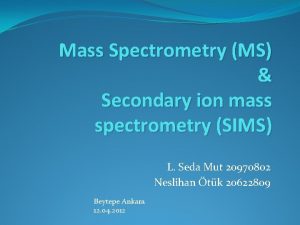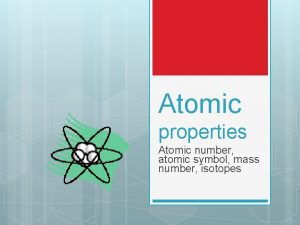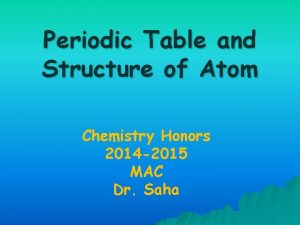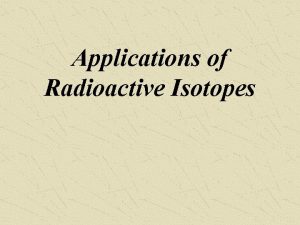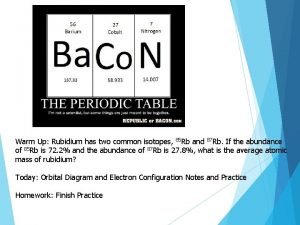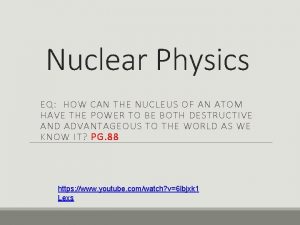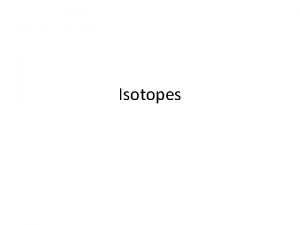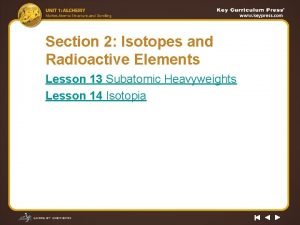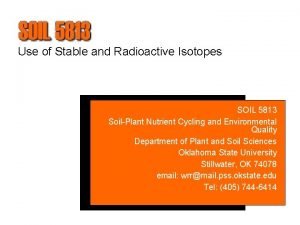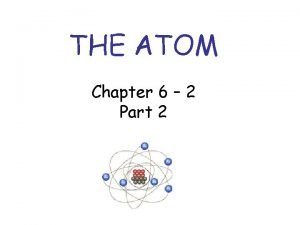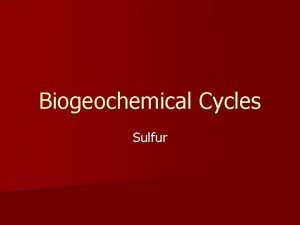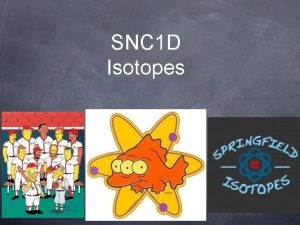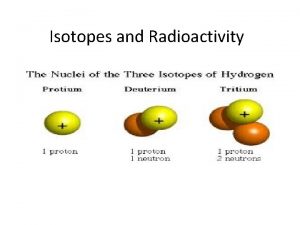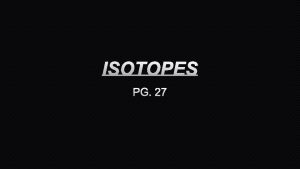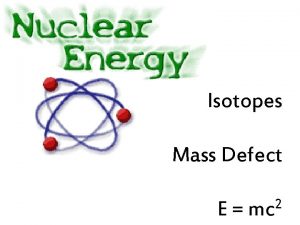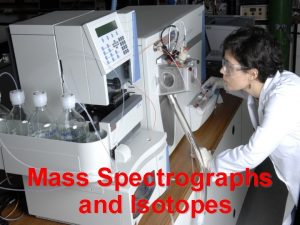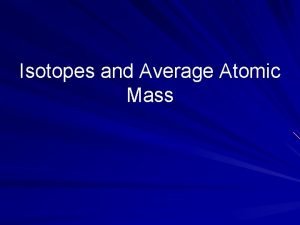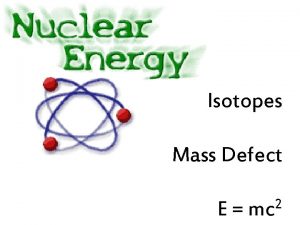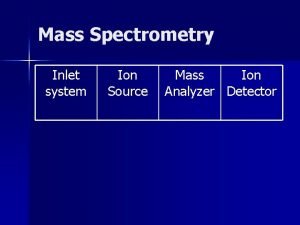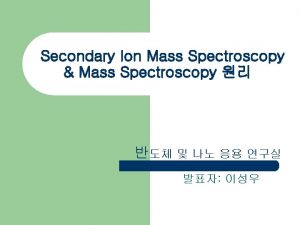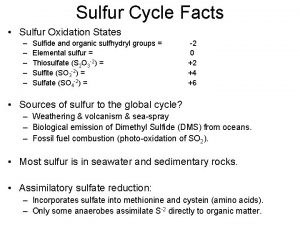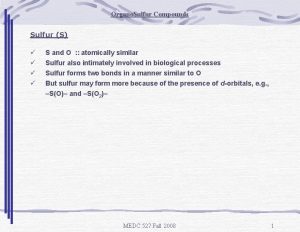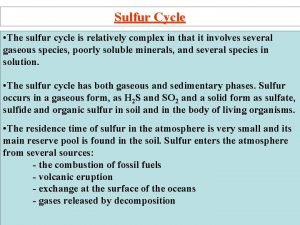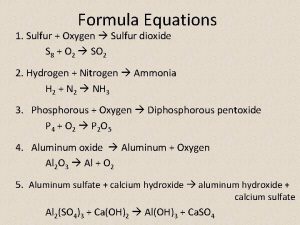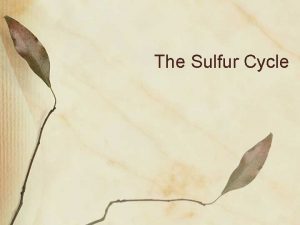Sulfur Isotopes in Sulfides using Secondary Ion Mass




















- Slides: 20

Sulfur Isotopes in Sulfides using Secondary Ion Mass Spectrometry (SIMS) Glenn Piercey SIMS Lab - CREAIT

Sulfur Isotopes in Sulfides using SIMS • Sample Preparation • SIMS Instrument • Data Analysis • Case Studies - Lemarchant Deposit – Central NL - Ming Deposit – Central NL - Voisey’s Bay – Northern Labrador

Sample Preparation Drill Rig Sample gold coating Drill Core Sectioning/ epoxy/ polishing Selecting

Sample Preparation: Mapping SIMS Sulfide Puck 4 x Image Galena 10 x Image Galena


Primary Column -Two sources used to produce primary ions: 1. Duoplasmatron (DP)- uses oxygen to produce O- or O 2+ ions. 2. Cesium Ionization Source – produces Cs+ ions. Ions extracted from sources pass through a primary beam mass filter (PBMF) to remove unwanted species from beam. Electrostatic lenses and apertures control the intensity and size of the primary beam hitting the sample.


Mass Spectrometer Electrostatic Analyzer (ESA) and Magnet work to separate secondary ions by mass, charge and energy resulting in only ions of interest hitting the detection/counting system.

Video Tour of SIMS Lab (5 minutes) 500 MB video

Sample Analysis: Sulfur Stable Isotopes 34 S/32 S = ratio of heavy isotope to light δ 34 S = ‰ ( per mil) = difference in isotope composition of sample relative to international standard, VCDT. δ 34 S = R sample – R standard/ Rstandard x 1000

Sample Analysis: Standard Development SIMS, Solution ICP-MS, Laser ICP-MS, IRMS Matrix match, homogenous Chalcopyrite = Norilsk (8. 4 ‰ VCDT) Pyrrhotite = Po. W 1 (3. 0 ‰ VCDT) = Tr. W 1 (-2. 6 ‰ VCDT) Pyrite = UL 9 (16. 3 ‰ VCDT) = KH 87 (0. 4 ‰ VCDT) Galena = HT 10 (14. 6 ‰ VCDT) Arsenopyrite = (ARSPY 57 3. 1‰ VCDT)

Sulfur (S) Isotope Geochemistry • Information gained from variations in isotopic 34 S/32 S composition of sulfide minerals • Variation caused by temperature and oxidation and reduction reactions on S.

Main Sulfur Sources in an Ore Deposit: • Sulfide minerals such as pyrite (Fe. S 2), galena (Pb. S), and chalcopyrite (Cu. Fe. S 2) are formed by binding metal with sulfide. Sulfur sources within these sulfides are: 1. Magmatic sources– fractionation restricted (0+/-3 per mil) 2. Thermochemical sulfate reduction (TSR) of seawater sulfate 3. Bacterial sulfate reduction (BSR) – anaerobic bacteria reducing seawater sulfate 4. Igneous, metamorphic and/or sedimentary wall rock.

CASE STUDY 1: Multiple Sulphur and lead sources recorded in hydrothermal exhalites associated with the Lemarchant volcanogenic massive sulfide (VMS) deposit, central Newfoundland, Canada Lode, Piercey, Layne, Piercey and Cloutier, 2017. Mineralium Deposita 52: 105 -128. - d 34 S systematics indicate sulfur predominantly biogenically derived from Baterial sulfate reduction (BSR) of seawater sulfate. - Some sulfides near vent contain a higher proportional of sulfur from thermochemical sulfate reduction (TSR).

Thermochemical S source for sulfides Biogenic S source for sulfides

CASE STUDY 2: Variations of sulphur isotope signatures in sulphides from the metamorphosed Ming Cu(−Au) volcanogenic massive sulphide (VMS) deposit, Newfoundland Appalachians, Canada Brueckner, Piercey, Layne, Piercey & Sylvester (2014) 50(5): 619 -640 Sources of Sulfur at Ming VMS Deposit: 1. Thermochemical sulfate reduction (TSR) -Silicified horizon consistent with sulfur from TSR. 2. Sulfur leached from igneous wall of magmatic fluids - Mixing of reduced seawater sulfate with igneous sulfur. - The influence of igneous sulfur increases with temperature.


CASE STUDY 3: Sulfur and oxygen isotopic evidence of country rock contamination in the Voisey’s Bay Ni-Cu-Co deposit, Labrador, Canada Ripley, Park, Li and Naldrett (1999) Lithos 47: 53 -68 S Sources in Magmatic Ni-Cu (Voisey’s Bay): • The Tasiuyak Gneiss (country rock) more deplete S signature range (produced by BSR= -2 to -17‰). • Enderbitic gneiss (country rock), S signature around 0‰ • Mantle derived sulfur (0 +/- 3‰)


Reid Brook = 50% S from country rock Eastern Deeps N Troctolite = Mantle Derived S Eastern Deeps, Discovery Hill, Ovoid = mixing between mantle and country rock
 Sulfur readily forms the following monatomic ion:
Sulfur readily forms the following monatomic ion: Ms principle
Ms principle Sulfur atomic number and mass
Sulfur atomic number and mass C6h12 fuerza intermolecular
C6h12 fuerza intermolecular Dipolo dipolo inducido
Dipolo dipolo inducido Que es fuerzas intramoleculares
Que es fuerzas intramoleculares Example of ion dipole
Example of ion dipole Isotopes stable and unstable
Isotopes stable and unstable Fertile isotopes
Fertile isotopes Isotope abundance formula
Isotope abundance formula Mass of oxygen
Mass of oxygen Atomic isotopes
Atomic isotopes Applications of radioisotopes
Applications of radioisotopes Orbital diagram for rubidium
Orbital diagram for rubidium Uses of radioactive isotopes in agriculture
Uses of radioactive isotopes in agriculture Write the hyphen notation of the three isotopes of hydrogen
Write the hyphen notation of the three isotopes of hydrogen Isotopes pogil
Isotopes pogil How to write atomic number and mass number
How to write atomic number and mass number Lesson 13 subatomic heavyweights isotopes
Lesson 13 subatomic heavyweights isotopes Isotopes
Isotopes Properties of isotopes
Properties of isotopes

